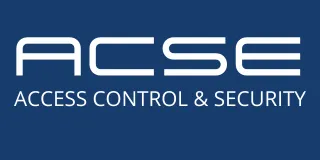
Preventative Maintenance for Automated Gates: How to Extend System Lifespan
Automated gates provide security, convenience, and controlled access for homes, businesses, and industrial properties. However, like any mechanical and electronic system, they require regular maintenance to ensure they function safely and efficiently. Neglecting maintenance can lead to costly repairs, security vulnerabilities, and even system failure.
This article outlines key preventative maintenance practices that help extend the lifespan of automated gates, reduce the risk of malfunctions, and ensure optimal performance for property owners and installers.
Why Preventative Maintenance is Essential for Automated Gates
Routine maintenance is crucial for preventing unexpected failures, safety hazards, and costly replacements. Here’s why it should be a priority:
Extends System Lifespan – Regular upkeep prevents premature wear and tear, ensuring a longer operational life.
Enhances Security – A well-maintained gate reduces security risks, preventing unauthorized access.
Minimizes Downtime – Preventative care helps avoid sudden malfunctions that could leave properties vulnerable.
Reduces Repair Costs – Addressing small issues early prevents expensive breakdowns and replacements.
Ensures Compliance with Safety Standards – Maintenance helps keep gates in compliance with UL 325 and ASTM F2200 safety regulations.
Key Components That Require Routine Maintenance
To maintain an automated gate system, it’s essential to inspect and service all key components regularly.
1. Gate Operator (Motor & Drive System)
The motor and drive system are the heart of an automated gate, and failure here can disable the entire system.
Check for signs of overheating or unusual noises.
Ensure that gears, belts, and chains are free from excessive wear.
Lubricate moving parts to prevent friction and strain on the motor.
2. Hinges, Rollers, and Tracks
These mechanical components endure constant movement and require periodic adjustments.
Inspect for rust, misalignment, or wear.
Clean debris and dirt from rollers and tracks to ensure smooth movement.
Adjust hinges if the gate starts to drag or make abnormal noises.
3. Electrical Connections & Wiring
Automated gates rely on electrical components, and faulty wiring can lead to system failures.
Inspect for loose or corroded connections.
Test voltage levels to ensure the gate is receiving proper power supply.
Keep control panels free of moisture and dirt buildup.
4. Safety Devices (Photo Eyes & Edge Sensors)
To prevent accidents, safety features must always function correctly.
Test photoelectric sensors to ensure they detect obstructions.
Clean infrared beams to remove dust and dirt interference.
Check the auto-reverse function to ensure the gate stops or reverses if an obstacle is detected.
5. Remote Controls & Access Systems
If a gate is controlled via remote access, these systems require periodic testing.
Replace batteries in remotes and keypads.
Ensure that RFID readers, intercoms, or smartphone access systems are functioning properly.
Check Wi-Fi or Bluetooth connectivity for smart access control systems.
Recommended Maintenance Schedule
Consistent maintenance prevents system failures and keeps the gate running smoothly. Here’s a recommended maintenance plan:
Monthly Maintenance Tasks
Visually inspect the entire gate system for damage or obstructions.
Clean and lubricate hinges, chains, and drive mechanisms.
Test the manual release function to ensure emergency access.
Verify that photo sensors are clear and aligned correctly.
Quarterly Maintenance Tasks
Inspect electrical connections and wiring for corrosion.
Adjust tension on belts, chains, and springs.
Test the backup battery system to ensure proper operation.
Annual Maintenance Tasks
Perform a comprehensive system check and professional servicing.
Replace worn-out bearings, rollers, or chains.
Check and update software for smart gate access systems.
Common Issues and Troubleshooting Tips
Preventative maintenance helps identify and resolve minor issues before they become major problems. Here are some common problems and how to fix them:
Gate won’t open or close → Check power supply, remote signal, and obstruction sensors.
Slow or jerky movement → Lubricate moving parts and inspect track alignment.
Loud noises or grinding sounds → Tighten loose components and check for worn gears.
Remote control not responding → Replace batteries or reprogram access credentials.
Professional Maintenance vs. DIY Maintenance
While basic maintenance can be handled by property owners, certain tasks require professional expertise.
DIY Maintenance
Cleaning, lubricating, and removing debris.
Checking batteries in remotes and access control devices.
Testing safety sensors and auto-reverse functions.
Professional Maintenance
Electrical repairs and control panel diagnostics.
Advanced troubleshooting of motor or drive failures.
Regulatory compliance checks for UL 325 and ASTM F2200.
For optimal performance and safety, it’s recommended to schedule annual professional inspections.
Final Thoughts: Ensuring a Long-Lasting Automated Gate System
A proactive maintenance approach extends the lifespan of an automated gate, reduces repair costs, and enhances security.
Regular inspections prevent unexpected failures.
Proper lubrication and cleaning ensure smooth operation.
Testing safety features keeps the gate compliant and secure.
For property owners and installers, following a structured maintenance plan ensures that automated gates remain efficient, safe, and reliable for years to come.

